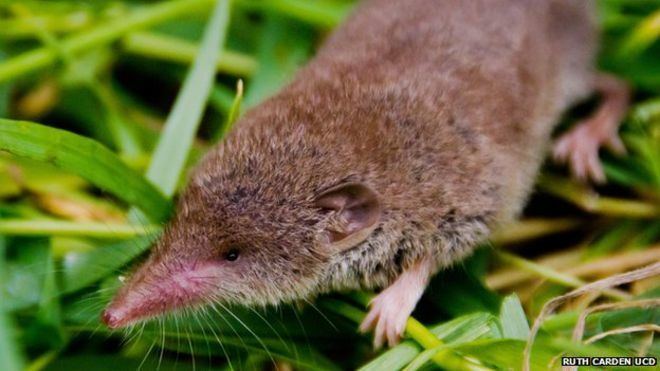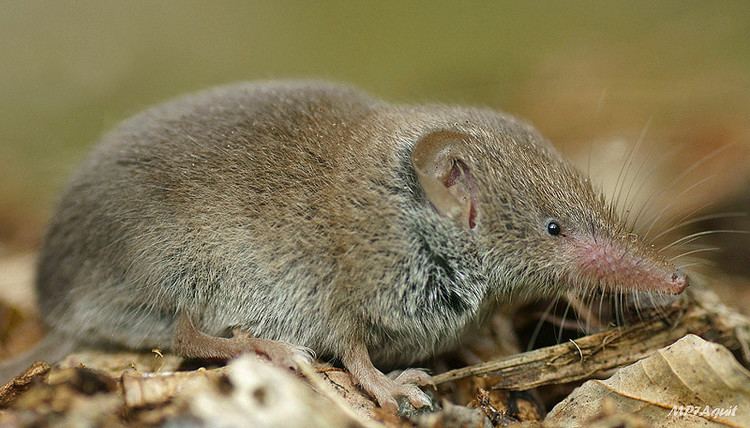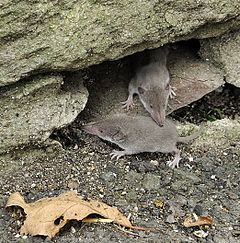Higher classification Crocidura | Phylum Chordata Family Soricidae Scientific name Crocidura russula Rank Species | |
 | ||
Similar Crocidura, Shrew, Mammal, White‑toothed shrew, Lesser white‑toothed shrew | ||
Greater white toothed shrew hunting in garden
The greater white-toothed shrew (Crocidura russula) is a small insectivorous mammal found in Europe and North Africa. It is the most common of the white-toothed shrews. This species is found along the Mediterranean, Netherlands, Belgium, Germany and Portugal; in addition, the Osorio shrew of the Canary island of Gran Canaria, originally described as a separate species (Crocidura osorio), was later discovered to be a population of introduced greater white-toothed shrew. Its preferred habitats are grassland and woodland. It is slightly larger than the lesser white-toothed shrew but otherwise very similar, and can often be distinguished only by close inspection of its teeth which are unpigmented.
Contents
- Greater white toothed shrew hunting in garden
- Musara a gris crocidura russula greater white toothed shrew
- Physical description
- Habitat
- Diet
- Predation
- Behavior
- Reproduction
- Life span
- Role in the ecosystem
- References

Musara a gris crocidura russula greater white toothed shrew
Physical description

The greater white-toothed shrew is distinguished by a careful examination of their unpigmented teeth. Like other "white tootheed-shrews", C. russula lacks the deposition of iron in their enamel at the tips of their teeth This particular species has a greyish or reddish brown upper coat with a yellowish grey coat in the underside The greater white-toothed shrews are part of the medium-sized shrews and weigh around 11 grams to 14 grams The head and body length of C. russula is about 6 to 9 cm and the tail length averages to about 3 to 4.3 cm
Habitat

C. russula are fond of temperate regions with plentiful insects. They are generally found in habitats such as grasslands, woodlands, hedgegrows and prime agricultural areas. To prepare for colder seasons, these shrews can be found living near farms and gardens. The greater white-toothed shrews tend to build their nest under stones, logs, and in abandoned burrows. Typically these shrews are found in elevations below 1000 meters
Diet
The greater white toothed shrew feeds mainly on invertebrates and occasionally small rodents, lizards and small amphibians.
Predation

Owls, snakes, and other small carnivorous mammals such as weasels are the main predators of C. russula. In order to avoid predation, the greater white-toothed shrews can be found undercover of vegetation or leaf litter when active. Cryptic coloration is also used as an effective method to avoid predation.
Behavior
The greater white-toothed shrews are classified as semi-social mammals. During winter, C. russula are found sharing nests and enter torpor. Mated pairs are found guarding their territories together. C. russula are highly monogamous and exhibit a female-biased dispersal, which is highly uncommon in mammals. This dispersal pattern can also occur due to infiltration and migration to empty breeding sites. Nonetheless, this dispersal pattern is a preventative measure for inbreeding. The greater white-toothed shrew can be very vocal.C. russula can find their way around their environment via a primitive form of echolocation where they produce a high pitched twittering call to interpret their environment. The use of this laryngeal call and vibrissae allow the shrews to find their way around their environment. There have not been any concrete reports on the modes of communication used by this species,however, the vocalization and tactile and chemical cues likely to be used.
Reproduction
The greater white-toothed shrew typically experiences one breeding season in its entire lifetime, whereby fertilization occurs right after parturition. C. russula breed mainly from March to September, producing about four litters which can contain anywhere from 2 to 10 young. The sexual maturity in this species is fairly quick. The litters remain in their parental territory till the next breeding season.
Life span
The greater white-toothed shrew has a lifespan for about 18 months in the wild, but can survive for 30 months in captivity under laboratory conditions.
Role in the ecosystem
The C. russula serves as a prey to many animals, however, an abundance in this species may lead to a decline in other small mammals such as pygmy shrews. In April 2008, the greater white-toothed shrew was discovered in Ireland. While the introduction of the species will possibly sustain threatened birds of prey, such as the barn owl, the nonnative mammal could threaten some of the smaller native species, such as the Eurasian pygmy shrew.
